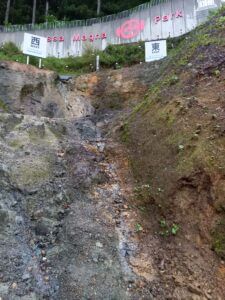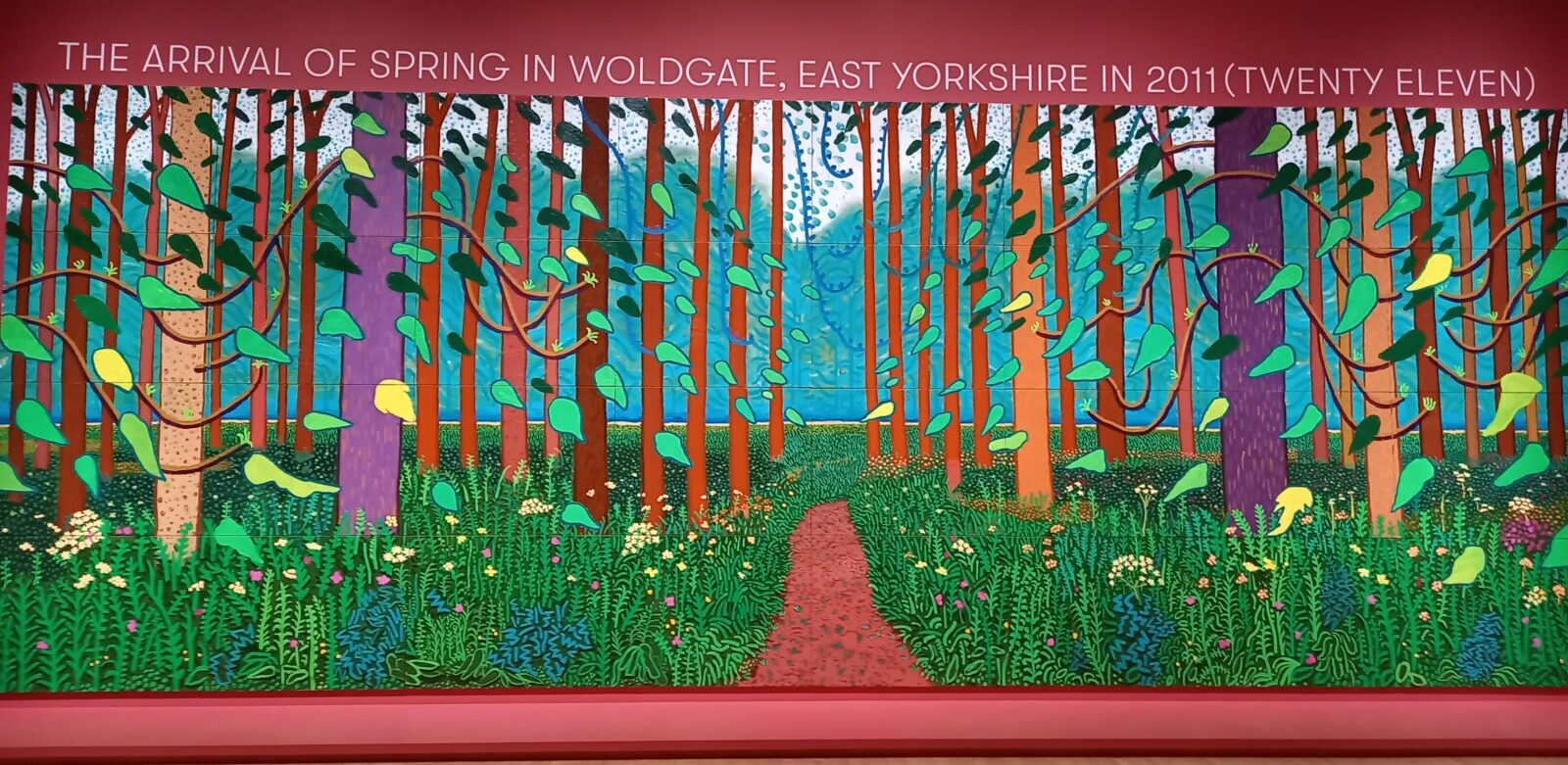*フォッサマグナミュージアムとフォッサマグナパークの場所は少し離れています。見学に向かうには、時間がかかりますので気を付けてください。The Fossa Magna Museum and Fossa Magna Park are located a short distance apart. Please be aware that it will take some time to head out for a visit.
- 東日本と西日本の地質の境目をこの目で見てきた! I have seen with my own eyes the geological boundary between eastern and western Japan!
- フォッサマグナパークで東北日本と西南日本の境目を見よう! See the border between Northeast Japan and Southwest Japan at Fossa Magna Park!
- そもそも、フォッサマグナって何? What is the Fossa Magna anyway?
- フォッサマグナパークの地層断面のことを詳しく学ぶために、まず、フォッサマグナパークへ行こう To learn more about the stratigraphic section of Fossa Magna Park, go to Fossa Magna Park first!
東日本と西日本の地質の境目をこの目で見てきた! I have seen with my own eyes the geological boundary between eastern and western Japan!
東日本と西日本の地質学的な境目を,自分の目で見られるところがあるのです。世界的にもとても珍しい場所で、しかも、安全に断層面を見ることができるのです。小さなお子さんも一緒に行けますよ。二つの断面の違いがはっきりわかる、すごい場所です。
There is a place where you can see the geological boundary between eastern and western Japan with your own eyes. It is a very rare place in the world, and moreover, you can safely see the fault plane. Even small children can go with you. It is an amazing place where you can clearly see the difference between the two cross sections.

フォッサマグナパークで東北日本と西南日本の境目を見よう! See the border between Northeast Japan and Southwest Japan at Fossa Magna Park!
フォッサマグナというのは、日本列島の本州、中央部にある地質学的に東北日本と西南日本の境目になっている地溝帯のことです。中学校や高校生の時に聞いたことがあるという人もいるのではないでしょうか。新潟県の糸魚川からはじまり、姫川・諏訪湖・釜無川・富士川・静岡を通る「糸魚川ー静岡構造線」と呼ばれる大きな断層のこと。このフォッサマグナは、日本列島を形作る2つのプレートの境界と考えられているのです。
The Fossa Magna is the rift valley that geologically borders northeastern and southwestern Japan in the central part of Honshu, the Japanese archipelago. Some of you may have heard of it when you were in junior high or high school. It is a large fault line called the “Itoigawa-Shizuoka Tectonic Line,” which begins at Itoigawa in Niigata Prefecture and runs through Himegawa, Lake Suwa, Kamanashi River, Fuji River, and Shizuoka. This Fossa Magna is considered to be the boundary between the two plates that form the Japanese archipelago.
このフォッサマグナは、2つの別々の時代にできた地層がぶつかり合っているところ。 普通は目で見ることはできないのですが、なんと新潟県糸魚川市大町に、このぶつかり合っているところを見ることができる場所がここなのです。
The Fossa Magna is a collision of geological strata from two different eras. Normally, you cannot see this collision with your eyes, but there is a place in Omachi, Itoigawa City, Niigata Prefecture, where you can see this collision.
そもそも、フォッサマグナって何? What is the Fossa Magna anyway?
フォッサマグナとは、ラテン語で「大きな溝」という意味です。明治時代に日本に来たドイツの地質学者・ナウマン博士が発見し、命名しました。日本海から太平洋までのびる1~3億年以上前にできた古い岩石の溝に、2000万年前以降にできた新しい地層がたまったものです。Fossa Magna means “great gulf” in Latin. It was discovered and named by Dr. Naumann, a German geologist who came to Japan during the Meiji era. The Fossa Magna is an accumulation of newer strata formed 20 million years ago and later in a trench of older rocks formed more than 100 to 300 million years ago that stretches from the Sea of Japan to the Pacific Ocean.
「糸魚川世界ユネスコジオパーク」のサイトより引用
このフォッサマグナパークは、糸魚川-静岡構造線を人工的に露出させて、子どもでも行けるルートを備えた断層見学公園なんです。私が訪れた際は、小学校に上がるくらいのお子さんも、親御さんと一緒に断層見学場所まで上ってきていました。断層破砕帯は東側の約1600万年前の岩石(右手)と、西側の約2億7000万前の岩石(左手)が接しているところで、地層の色も異なっています。2018(平成30)年8月にリニューアルオープンしたとのことで、表示もきれいでわかりやすかったです。
This Fossa Magna Park is a fault viewing park where the Itoigawa-Shizuoka Tectonic Line has been artificially exposed and equipped with a route that even children can take. When I visited, children as young as elementary school age were coming up to the fault viewing area with their parents. The fault fracture zone is where rocks about 16 million years old on the east side (right hand side) and rocks about 270 million years old on the west side (left hand side) meet, and the strata are different colors.
フォッサマグナパークの地層断面のことを詳しく学ぶために、まず、フォッサマグナパークへ行こう To learn more about the stratigraphic section of Fossa Magna Park, go to Fossa Magna Park first!
フォッサマグナパークの断層面について知るには、まず,少し離れたところにあるフォッサマグナミュージアムへ行きましょう。公園の中にある素敵なところです。内容が盛りだくさんなので、じっくり見ると2~3時間くらいほしいところ。さらに、フォッサマグナパークの断層面を見ようと思うと,かなり時間がかかります。車で20分くらいでフォッサマグナパークの駐車場に着きます、。すぐ近くに、公共のお手洗いがあります。道路のすぐ脇にあります。中はきれいに清掃されていました。そこから、道路に沿って山の登り口まで行きます。山の入り口は舗装されていますが急な登り坂です。別のルートでスロープの道の案内がありましたが、入り口は少し離れているようでした。山の中は、木が茂っています。道幅があまり広くないので、小さなお子さんは手をつないであげると安心だと思います。ゆっくり歩いて行くと地層断面が見えてきます。感動的!断層面の近くに行くには,長い階段を降りていきます。その先にも,見所があるようでしたが、私は,夕暮れが近くなってきたので引き返して帰りました。
To learn more about the fault planes of Fossa Magna Park, first go to the Fossa Magna Museum, located a short distance away. It is a nice place in the park. It has a lot of contents, so you will want about 2 to 3 hours to take a good look at it. In addition, if you want to see the fault planes in Fossa Magna Park, it will take much longer. It takes about 20 minutes by car to reach the parking lot of Fossa Magna Park. There is a public restroom right near there. It is located right next to the road. It was clean inside. From there, follow the road to the entrance to the mountain. The entrance to the mountain is paved but steep. There was another route leading to a sloped path, but the entrance seemed a little further away. The mountain is overgrown with trees. The path is not very wide, so small children may feel safer if they hold hands with you. Walking slowly, you will see the strata cross section. It is impressive! To get closer to the fault plane, you have to go down a long flight of stairs. There seemed to be more places to see beyond that, but I turned around and went back home because it was getting close to dusk.
Have a nice time! (^^)/




コメント